#shogunate
Explore tagged Tumblr posts
Text
Japanese History Words
将軍 (しょうぐん)
they were a pretty big deal ~

Shōgun: Officially this position was called 征夷大将軍 (Hiragana: せいいだいしょうぐん, Romanji: seii taishōgun) As we know, Japanese love their abbreviations, Shōgun (将軍, means army leader). Kanji Breakdown: 征(せい, sei) means to "conquer" or "subjugate" 夷(い, i) means "brutish" or "unsophisticated warrior" 大(だい, dai) means "big" or "great" [meaning of this kanji changes based on context] 将(しょう, sho-u) means "commander" or "leader" 軍(ぐん, gun) means "armed forces" or "troops"
Essentially, 征夷大将軍 means Commandar in Cheif of Army Against the Barbarian Forces [or Commander-in-Chief of the Expeditionary Force Against the Barbarians]
They were the millitary rulers appointed by the Emperor of Japan in the periods spanning between 1185 - 1868. Generally, Shogun were the de-facto rulers of the country. The last Shogunate of Japan was the 徳川幕府 (Tokugawa Shogunate) also known as the Edo Shogunate. There were total of three shogunates established in Japan: 1. 鎌倉幕府, Kamakura Shogunate (1192–1333, overthorwn during the Kemu Restoration, re-establishing the Imperial Goverment rule until being overthrown by the Ashikaga Takauji and his offspring forming the 足利幕府) 2. 足利幕府, Ashikaga Shogunate (1336–1573, overthrown by 織田信長, Oda Nobunaga, a damiyo) 3. 徳川幕府, Tokugawa Shogunate (1603–1868, disbanded in 1867)
Now of course, the history of each other these shogunates and famous shoguns require many, many posts to over!
As always, Gintama has inspired me to learn more about Japanense culture hehe. Hopefully this was helpful to you as well :)
Please feel free to add onto the post with histroy facts and other interesting stuff :D
#japanese#learning japanese#japanese vocabulary#japan#hiragana#kanji#learn japanese#katakana#langblr#gintama#shogun#history#japanese history#military#edo period#shogunate#rulers#sakata gintoki#oda nobunaga#tokugawa ieyasu#kamakura#world history#learning a new language#learning
14 notes
·
View notes
Note
What patterns are traditionally allowed for a man's kimono? What little I can find indicates that it's stripes or nothing.
In the past, men kimono could be as extragant and luxurious as women's, but men modern kimono fashion takes a lot from Edo era.
The thing is: it was then super regulated by the shogunate which turned a bad eyes at the chônin (=commoners living in cities, especially rich merchants). Those grew richer and richer - much more so than many samurai, and the shogunate dictated sumptuary law after sumptary law to try keep them in check.
In men kimono fashion, this means lavish patterns tended to be hidden: haori linings, juban underwear, etc. It also means they turned to other time consumming techniques to show wealth: edokomon (tiny tiny tiny patterns), and nezumi (grey family) and cha (brown family) subtle colors are some examples.
This historical heritage is sadly still super strong! But that doesn't mean any pattern is actually forbidden :) They are simply used differently, and many men today are pushing the lines so bold patterns (and colors) make a come back!
On a side note, some patterns are much much rarer on women items while they are more easily found on men's: shunga (erotic art), yôkai and/or gruesome sceneries, variation on "manly" symbols like the dragon/tiger imagery, etc etc etc
199 notes
·
View notes
Text
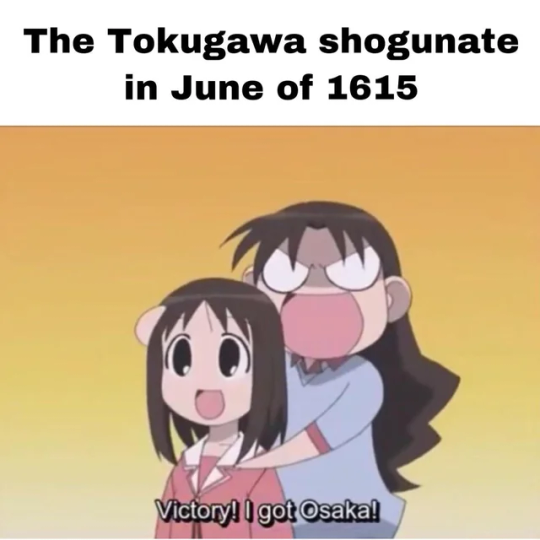
79 notes
·
View notes
Text



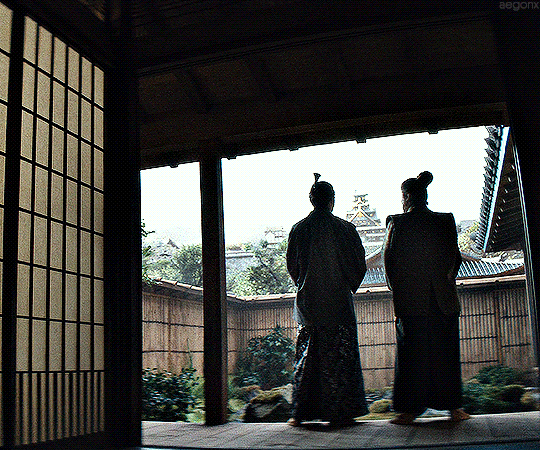
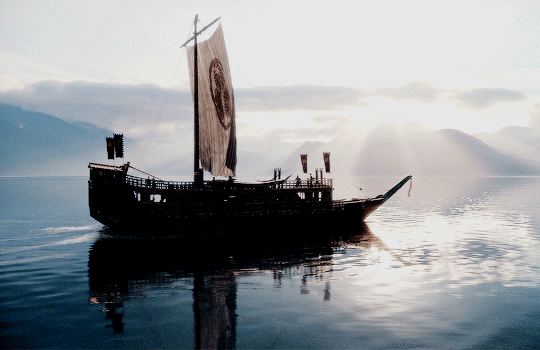

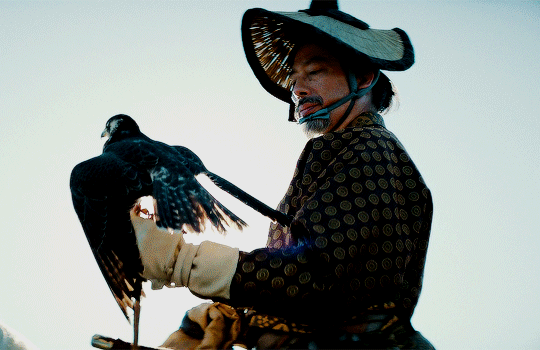
ꜱʜŌɢᴜɴ ✾ 2024
some of my fav shots (that've been giffed so far ^ ^) - gif creds attached.
#shogun#shogun fx#samurai aesthetic#aesthetic#hiroyuki sanada#shogunate#lord toranaga#tokugawa period#edo period
34 notes
·
View notes
Text
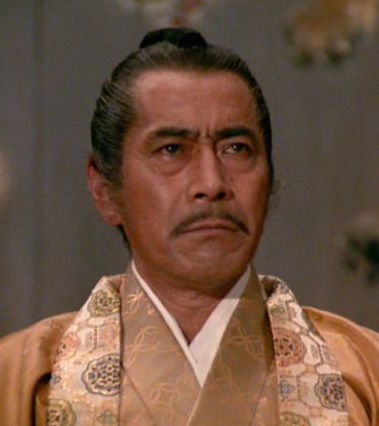
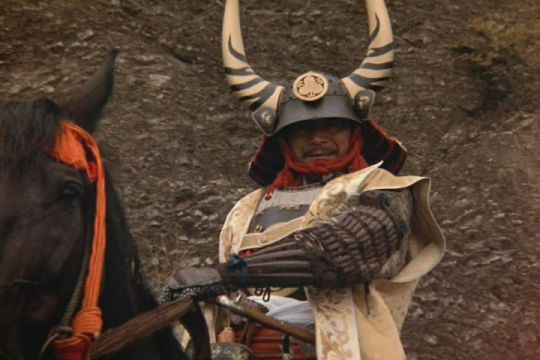
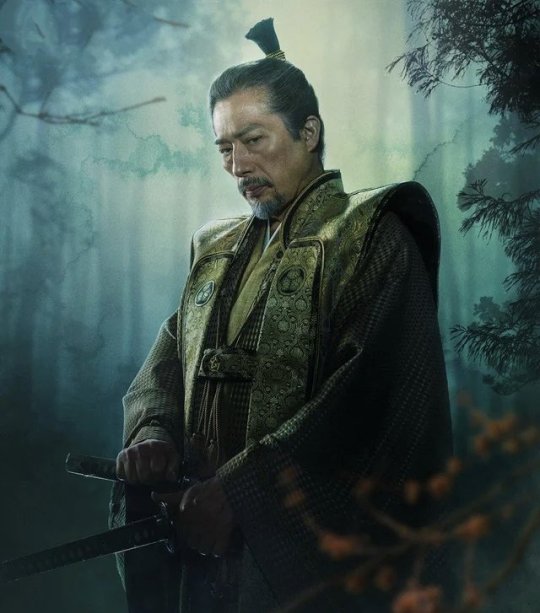
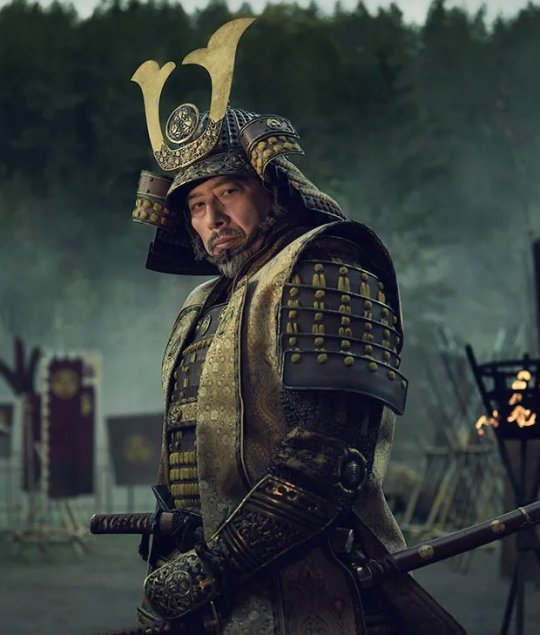
🌸Shogun🏯🇯🇵📺🇺🇸
1980 vs 2024
#ToshirôMifune and #HiroyukiSanada
Lord Yoshi Toranaga was inspired by the life of warlord and later shōgun, #TokugawaIeyasu in feudal Japan.
#Shogun or the top military leader holds the real power in the country and act as regent for the Emperor. The #shogunate is a system of military gov't which started in 1192 and lasted until the 19th century.
Shōgun (2024) now streaming on #DisneyPlus.
#ShogunFX #history #fiction
#Shogun#Toshirô Mifune#Hiroyuki Sanada#Tokugawa Ieyasu#feudal Japan#shogunate#Disney Plus#Shogun FX#history#fiction#Japan
28 notes
·
View notes
Text
My latest piece. The Red Panda Samurai.....
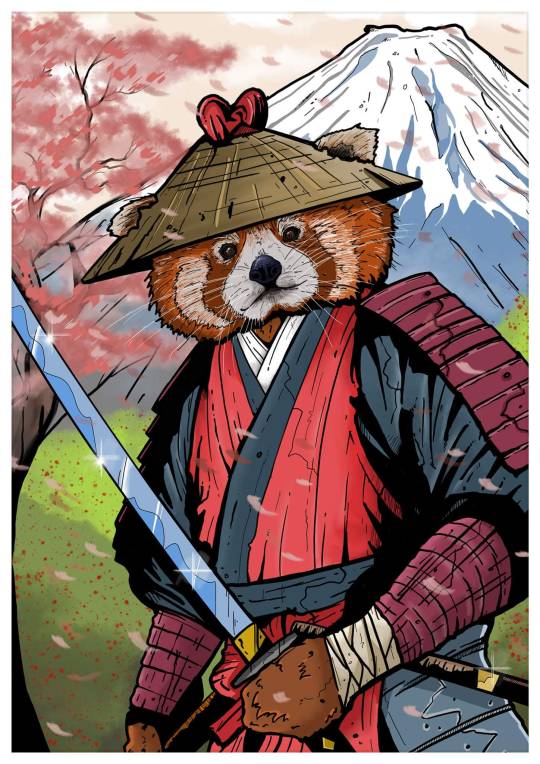
My latest piece. The ever adorable, ever deadly....Samurai Red Panda. A new character that will be added to the growing team of Warrior animals, for a new comic I'm working on. Enjoy.
#artists on tumblr#art#digital art#digital illustration#illustration#fypシ#illustrator#follow#comic book art#original art#british comics#red panda#samurai#japan#japanese#shogunate#enjoy
24 notes
·
View notes
Text
Taira no Masakado and the Rise of the Samurai

When the central authority in Kyoto decided to go to war against the rebellious Emishi in northeastern Honshū, they quickly realized the inferiority of their peasant infantry compared to the mounted archers of their enemies. To win the war, local notables with the resources to purchase horses countered the threat by adapting to the Emishi's style of warfare. Some argue that the "Way of the Samurai" developed during this conflict with these renegades. Specializing in horse archery, they equipped themselves with flexible leather armor instead of heavy iron armor and, in certain instances, utilized their new, curved swords. This style of fighting required years of training, making the local notables who fought as horse archers a highly exclusive elite. Their prowess on the battlefield soon translated into increased political importance, as the central authority in Kyoto became reliant on their military capabilities. Over time, a distinct class identity and a sense of strength emerged among these warriors (bushi).
Fast forward to the 10th century, this strength and newfound sense of self-determination were exemplified by the first major rebel against the central court in Japanese history: Taira no Masakado. Like many members of the emergent samurai class, he hailed from the Kanto region and was a descendant of Emperor Kanmu (r. 781–806). With the support of his followers, he rebelled against the emperor, declaring himself "the new emperor" (Shinnō) to challenge Kyoto's perceived divine right to rule. He captured nine regional headquarters and stopped sending taxes to the capital. However, his rebellion was crushed in 940 by Fujiwara no Hidesato, who sent Masakado's head to Kyoto.
Taira no Masakado's legacy endured. His rebellion marked the beginning of an independence movement in the Kanto region. The Taira clan would continue to play a central role in Japanese politics. This episode also demonstrated that the samurai had awakened and become aware of their strength. Centuries later, during the Kamakura Shogunate, the bushi warrior elite would come to dominate much of Japan, eventually extending their influence across the entire archipelago during the Muromachi period.
Olivier Goossens
#japan#samurai#bushi#bushido#japanese history#shogun#shogunate#japanese art#japanese culture#medieval#medieval history#medieval art#middle ages#military#military history
3 notes
·
View notes
Text
a sad day, as today, in 1868, the Tokugawa Shogunate was abolished.
Terribly sorry for everyone only hearing about this just now.
2 notes
·
View notes
Text

Star-shaped Goryokaku Castle at Hakodate was Japan's first Western-style fort. Goryokaku was constructed by the Togukawa Shogunate in 1864. Today only the walls and moat remain but the entire area is accessible as a park.
3 notes
·
View notes
Text

Kiso Yoshinaka and the Flight of the Child Emperor
Tomoe Gozen, by Kitao Masayoshi, Edo Period, Source: Ukiyo-e.org
The Rise of the Minamoto: Japan’s First Shogunate
The samurai, through most of Japan’s history, were the ruling warrior class. But that wasn’t always so. Discover how Japan transitioned under the Minamoto.
Yoshitsune’s Campaign

The Battle of Ichi-no-Tani, on folding screen, late 1600s, Source: Wikimedia Commons
Dan-no-Ura

Yoshitsune Leaps Over Eight Boats, by Utagawa Yoshitoshi, 19th century, Source: The Art of Japan
The Kamakura Shogunate

Hunting at the Foot of Mount Fuji, by Utagawa Kunisada, 1820, Source: Japanese Prints
#the rise of the minamoto#japan#history#minamoto#shogunate#samarai#kitao masayoshi#artist#art#utagawa yoshitoshi#utagawa kunisada
2 notes
·
View notes
Text
Flag of the Republic of Ezo

This is the flag of the Republic of Ezo. It comes from a world where the Boshin War went slightly more favorably for the Shogunate forces. As a result, the Meiji government was forced to, at least temporarily, recognize the Republic of Ezo. It wasn't long before the Japanese declared war on Ezo once again. However, the Satsuma Rebellion still happened and was a lot more widespread, emboldened by Ezo's success. The Meiji government was forced to focus on quelling the Satsuma Rebellion. Ezo was able to find support from France and Russia to help protect them from the Japanese. Eventually, Japan had no choice but to formally recognize the Ezo government.
In response to Ezo's alliance with France and Russia, Japan strengthened its ties to Britain and Germany. Following their failure to capture Hokkaido, the Japanese turned their attention to Korea. Ezo, under the command of the recently defected Saigo Takamori, also sent an expedition to conquer Korea. Korea was able to play Japan and Ezo off of each other, and was able to maintain its independence. In time, Korea was able to modernize and industrialize like Japan had. Japan was humbled by its failure in Korea, and the Japanese were forced to focus more on domestic policy than foreign conquest.
Ezo also pursued a policy of isolationism following the failed expedition to Korea. Some industrialization was a necessary evil, but on the whole Ezo strived to maintain as much of its traditional culture and way of life as possible. As time went on, however, Ezo began to increasingly fall under French influence. In many way, it could be said that Ezo had become a French protectorate.
World War I started off around the same time, and with very similar circumstances, as our world. However, in this world Japan fought for the Central Powers. The Japanese were bitter at the British for selling weapons to Ezo, resentful growing opposition to the creeping British influence on Japanese society, and their alliance with Germany was as strong as ever. Ezo initially tried to remain neutral, but a surprise Japanese attack prompted Ezo to join the Entente Powers. The war ended in an Entente victory. Japan was placed under crushing reparations to Ezo, and was forced to cease land in northern Japan to Ezo.
Japan began to grow resentful against Ezo, and began to rearm for another war. Ezo and Korea were subjected to a series of harsh bombing campaigns. It wasn't long before Ezo and Korea were forced to surrender and formerly occupied by Japan. The Japanese continued to expand their influence across East Asia and the Pacific. It wasn't long, however, before they found themselves in conflict with the United States. Like in our world, the war ended in an American victory.
Ezo regained its independence following the war. Though there is still bad blood between Ezo and Japan, the two nations are slowly putting their past behind them. There is a movement to reunify Ezo and Japan into a single nation, but it doesn't have much support at the moment. Still, you never know what the future might hold.
The flag is black and white in reference to the flag of the Tokugawa Shogunate, and the seven-pointed star stands for the spirit of the Ezo people.
Link to the original flag on my blog: https://drakoniandgriffalco.blogspot.com/2017/10/flag-of-republic-of-ezo.html?m=1
#alternate history#alternate history flag#alternate history flags#alt history#vexillology#flags#flag#Japan#Ezo#Hokkaido#Republic of Ezo#Flag of the Republic of Ezo#Satsuma Rebellion#Boshin War#Samurai#Shogunate#meiji restoration#Saigo Takamori
18 notes
·
View notes
Text
Was Nobunaga actually already the “shogun” without having the “Sei’i Taishougun” title?
This was a theory that I found while trying to study the bureaucratic protocols and norms of the Sengoku. It suggested that Nobunaga’s reign did too have the approval from the imperial court, and he didn’t need to take over the “Sei’i Taishougun” title from shogun Yoshiaki.
After ousting Yoshiaki, Nobunaga was awarded the titles Dainagon (Major counselor) and Ukonoe no Daishou (General of the Right, also sometimes shortened as simply “Udaishou”). These are titles that the shogun traditionally also held, as the “Sei’i Taishougun” title is something of a unique title that is separate from the imperial hierarchy. Upon these appointment, Nobunaga was allowed to be addressed by the honourific address that usually only the shogun has: ue-sama.
Some people thought that this means the imperial court has acknowledged that Yoshiaki’s authority is over, and Nobunaga is in charge now, even though he does not have the “Sei’i Taishogun” position at this point.
The logic for that theory was that in that time period, the Udaishou was the highest imperial office that someone of the samurai class could have, hence the tradition of having the shogun also hold that post. The higher ranking Sakonoe no Daishou/Sadaishou post, the General of the Left, was traditionally held by the noble houses.
Shogun Yoshiaki and his brother Yoshiteru before him did not have Dainagon and Udaishou titles, and the last Ashikaga shogun to also have the aforementioned titles was their father Yoshiharu. Yoshiaki and Yoshiteru’s official court title was only up to the Sakonoe no Chuujou (Lieutenant-General of the Left), one rank under the Taishou.
Because in the imperial hierarchy Nobunaga’s Udaishou post outranks Yoshiaki’s Sakonoe no Chuujou, the theory posits that he is already acknowledged by the imperial court as the new ruler replacing Yoshiaki. That is, he is the “new shogun” (i.e the samurai ruler of the land), even though he does not actually have the literal “shogun” title.
What will change if this theory turns out to be true?
For one, it further confirms the idea that Nobunaga is not as wildly "out there” as most people thought he was. He still operated within the standard norms of the time period and adhered to the established traditions, and didn’t just smash his way through the court and government without regard to the customs.
Also, if this theory is true, it would debunk all the Honnouji conspiracies that involve any variation of “the imperial court feared Nobunaga’s power/ambition”. If Nobunaga ruled with the approval of the imperial court, then all that backstage plotting makes no sense.
And the last thing is that this theory being true would also further lend credibility to the other theory saying that Nobunaga wished to return the power to the emperor and do away with the concept of a “shogunate rule”. After all, the specialty-designation “shogun” title was the very proof of the samurai rule breaking away from and undermining the imperial court. Nobunaga choosing to not take the shogun post, and instead adhering to the “standard” imperial court ranks, was thought to be proof that he’s returning to the old imperial rule rather than following the path of the “samurai/shogunate rule”.
Of course this is just a theory, and it only spawns more theories and what-ifs. I still find this worthwhile to consider because I’m realising that I don’t actually know what the rules and norms of the government of that time period is like. Even though in practice the daimyou and other local rulers largely disregard the central government (the shogun and the emperor both), I do see proof that the various rites and protocols still has to be performed. It means that the bureaucracy still matters to some degree, and learning about how this whole system works is something that is necessary to properly understand the Sengoku environment.
#long post#essay#theory#oda nobunaga#court title#Japan#japanese history#imperial office#samurai#sengoku#Sengoku Era#Sengoku period#feudal japan#shogunate#Warring states#Warring States Period#Warring States Era
29 notes
·
View notes
Text
Moronobu Gansai: A Free 17th Century Cartography Brush Set for Fantasy Maps
The Tōkaidō was the most important of the Gokaidō (Five Routes/Highways) administrated by the ruling Tokugawa shogunate during the Edo Period. Running along the coast of Honshu, this road linked the shogunate’s capital of Edo with the imperial city of Kyoto. Along this route were fifty-three government post stations where travelers had to show their traveling permits and pay their toll before…

View On WordPress
#adobe#brushes#cartography#design#edo#edo period#fantasy#free#hishikawa moronobu#honshu#illustration#japan#map making#maps#photoshop#shogunate
17 notes
·
View notes

